David Rudnick & Metahaven
What forms of social organization are emerging in the twenty-first century? How can designers represent them?
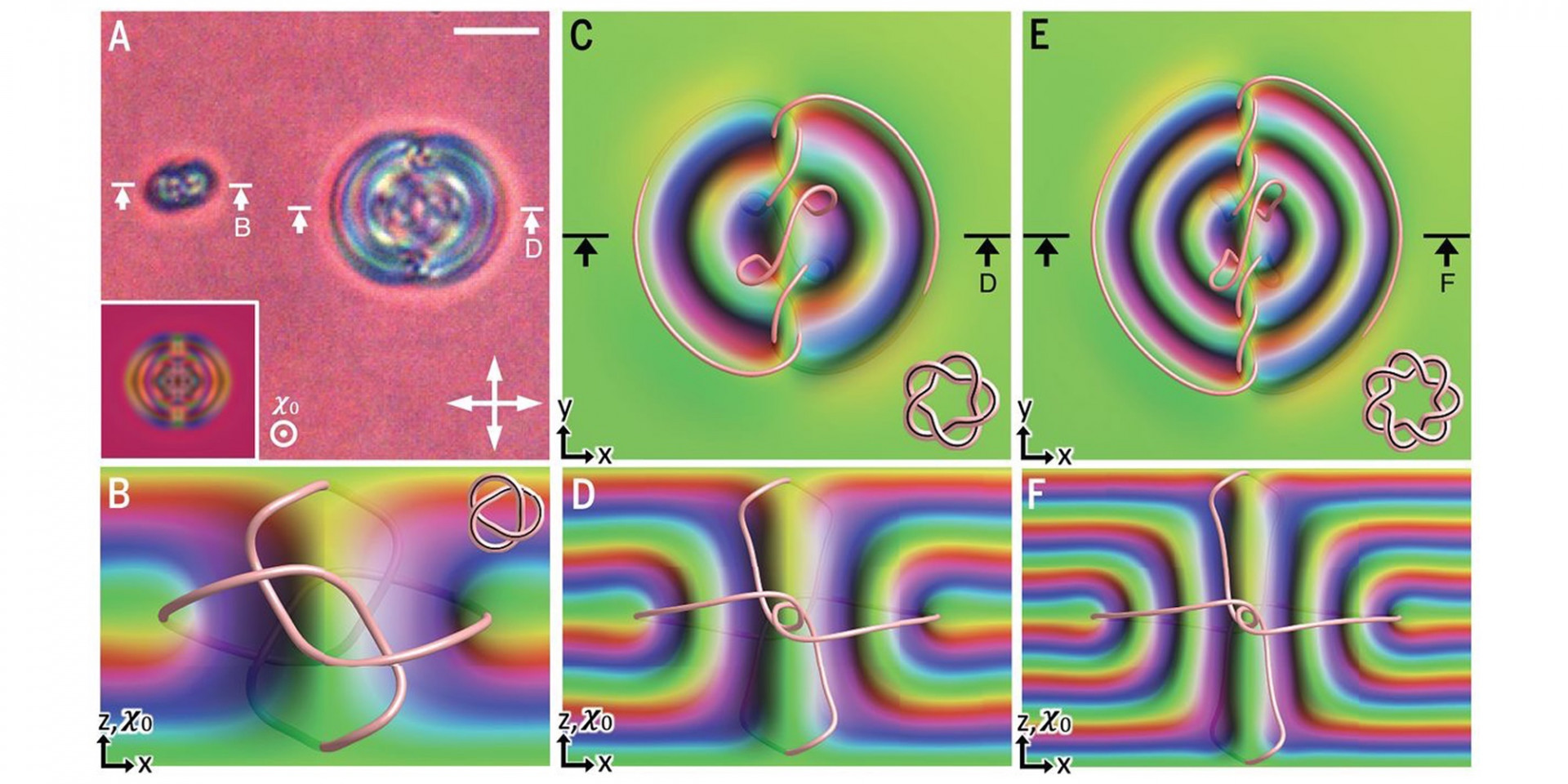
K Allado-McDowell and Emily Segal are frequent collaborators whose recent projects explore the esoteric qualities of emerging decentralized systems. In this conversation, the two discuss how recent astrological phenomena explain society’s changing relationship to value and spirituality through technology, and how their work has adapted to these shifts. Both have upcoming releases with Segal’s literary press, Deluge Books. Allado-McDowell’s “deepfake autofiction” Amor Cringe—written in collaboration with the language model GPT-3—follows a God-seeking influencer through bouts of painful self-awareness. Segal’s NFT project KNOTS, an extension of her use of the $NOVEL token to crowdfund her next novel, is a series of 720 3D animations investigating the magical, sigil-like properties of tied rope.

EMILY SEGAL You could look at recent projects that we’ve been working on separately and together as being related to the conversations we were having in our “tech x astrology” discussion group, which consisted of myself, K, Martti Kalliala, Kei Kreutler, Galen Wolfe-Pauly, Cab Broskoski, and the astrologer Chris Reppucci. The meetings took place in the time period leading up to the conjunction between Jupiter and Saturn in December of 2020 that triggered the shift to an “air triplicity.”
Jupiter represents expansion, gifts, luck, and the life principle, while Saturn represents construction, limits, hierarchies, and, in certain ways, the death principle. When those elements weave together, we get different “flavors” of the zeitgeist for long periods that are based on the element of the signs in which those conjunctions are happening. Since there are three signs that align with each element they’re called triplicities. At the end of 2020, we were entering into this new two hundred year period of conjunctions in the air signs Gemini, Aquarius, and Libra. The air elements have thematic historical resonances that have to do with networks becoming really important, while entrenched hierarchies that are based on more materialist concerns start to break down and fall.
ALLADO-MCDOWELL It was helpful to think through the cultural intersection of tech and astrology with people who were working on rigorously building things, and taking the intersection seriously. Obviously the tech world has been generally skeptical, materialist, and rationalistic in terms of its attitude toward astrology. Using technology to think through the application of an astrological condition with a group was a breath of fresh air.
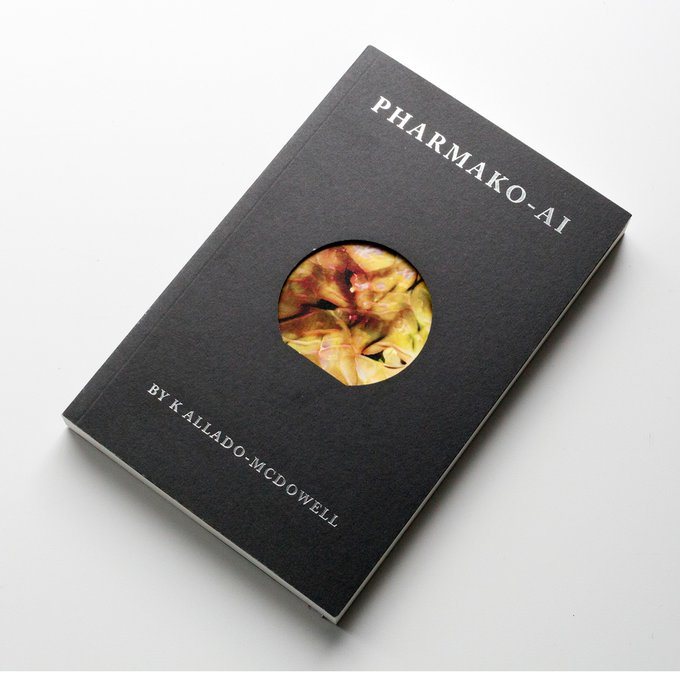
The air triplicity shift was on my radar and the meetings definitely helped expand my understanding of it. Over that summer, I wrote my book Pharmako-AI. I had been looking to the conjunction date with anticipation and hope that we would get back to a different vibe that felt more futuristic, but I think it was hard to feel the real shift until after it happened: the 2021 NFT phenomenon was a truer expression of that shift than anything that came before. NFTs made it feel real in terms of valuing things that are ephemeral—obviously they exist in a material way—but NFTs are primarily experienced as ephemera in an “airy” way, online. I think one reason why I’m pretty long on NFTs in general is that they emerged with this sudden turn, and they seem to embody the air quality.
SEGAL Widespread spiritualism, too: the mainstreaming of things that were considered taboo, woo-woo, esoteric topics. Even us having conversation previously may have been considered very strange.
ALLADO-MCDOWELL And not to mention the plague in the air. I’ve often thought of Jupiter and Saturn as representing expansion of industry in new ways. I guess for me, being involved in art and AI and contributing to that field, it felt like an influx of value to people that were making really ephemeral things that couldn’t be valued before.
There’s an interesting connection there. It’s the belief in the value of something that can’t be physically held, except for through the device. We can see it, and believe that it has value, and that belief comes from the air and its virtuality and ephemerality versus value coming from its embodiment in a traditional form. I think that’s what you were speaking about with this opening up of spiritual conversations and spiritual vocabularies, but also the translation of those into technical forms through astrology apps and the social media application of astrology. That seems like a very relevant piece of the puzzle.
SEGAL At the time, I wasn’t even thinking about putting my own work into a web3 paradigm per se. For me, one of the first expressions of entering the space was starting the literary press Deluge with Cyrus Simonoff and Hannah Baer around the same time. I started investigating what might be possible in a more collective mode of publishing, which was informed by these conversations about the air triplicity. I realized there are amazing print-on-demand tools, e-commerce tools, and other new technologies that make it easier than ever to globally distribute literature.

That doesn’t make it completely simple because books are an information dense, complicated medium—I tricked myself into thinking that it was going to be a total piece of cake, which is sometimes what you have to do with a new project. So we started then with the idea that we could take on more collaborators in various modalities, which is already happening. We publish queer, trans, experimental, and otherwise under-supported literature. There is a lot of advanced literary work with certain pulpy, binge-y, and fun elements. The first book that we published was my novel Mercury Retrograde, which used astrology as a metaphor for the way that information travels through society. Then we published a book of poems called Black Venus Flytrap by an amazing poet in LA named Jeanetta Rich.
During that period I was also looking at artists like William Burroughs, Brion Gysin, and Genesis P-Orridge, who introduced elements of randomness and chaos in order to activate the divinatory potential of literature. When K was constructing Pharmako AI, which is a dialogue with GPT-3, it seemed to me a super advanced, cracked-out version of the cut-up method those other artists had used. I felt really excited and honored to witness the unfolding of that writing because it seemed so timely.
You helped me create experimental poetry by running pages of my notebook through GTP-3. We also collaborated on The DOOM! Report for Nemesis, using research that we’d been compiling about how the concept of time was changing for people during Covid. We fed those responses into GPT-3 and used that to create a trend report. In our collaboration we tried to engage themes of networked randomness, chaos, and seeing the way that language could break open. This ability is turbocharged as AI technologies reach new forms of maturity and are released to bigger and bigger audiences. At the same time, when we text with autocorrect or use Gmail autoresponder, we’re already in the proximity of that type of writing.
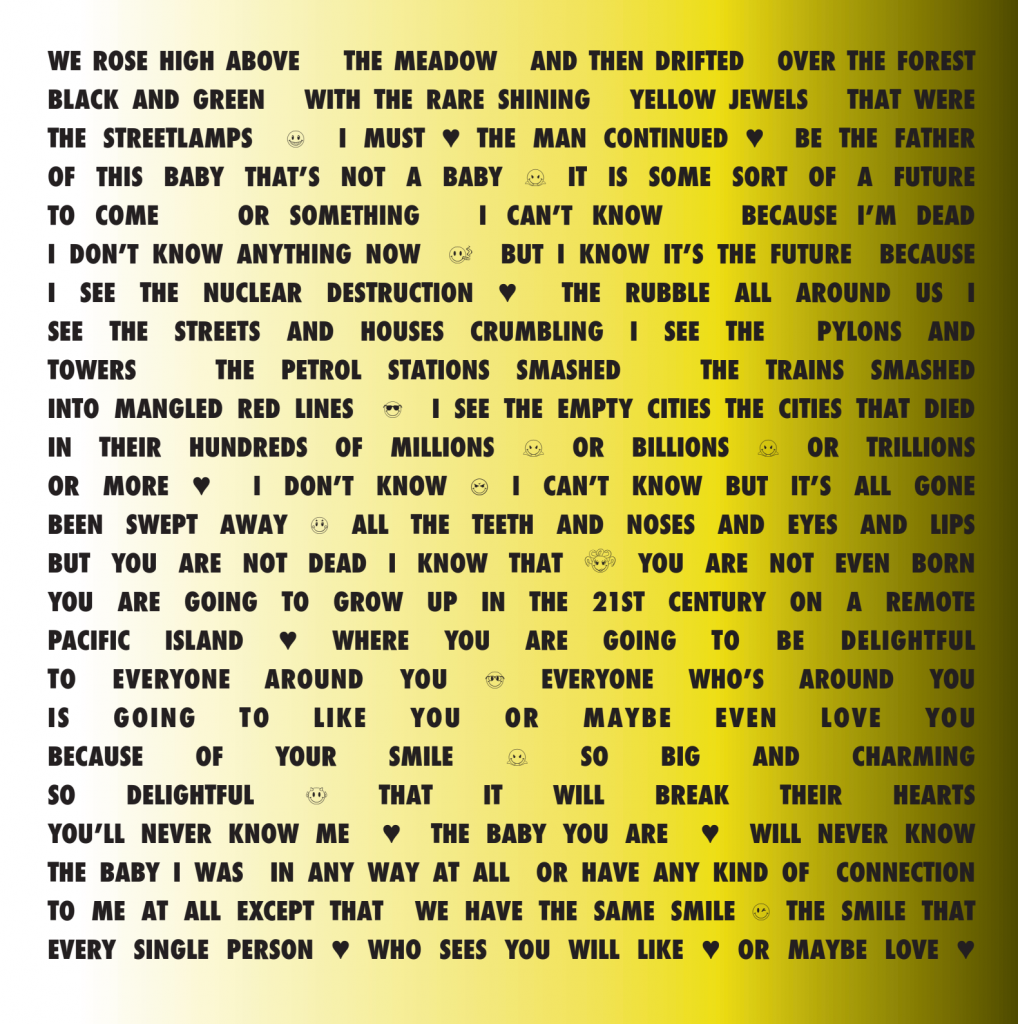
ALLADO-MCDOWELL That’s one the weirdest parts about all this, how subtly and powerfully these statistical systems—which can be approached as divinatory systems—are melting into the background of everything, and the way our agency is changing in relation to them. It feels uncanny. Maybe the reason that we are able to more broadly deploy things like astrology or divination as tools for thinking is because we’re normalizing pattern matching in statistical systems in our daily lives.
SEGAL That’s a really nice way of queuing up some of the concerns around the way we designed KNOTS, a project that I’m about to launch. KNOTS is a set of 720 3D-modeled knots, sold as NFTs. A portion of the sale of each NFT will go toward funding publishing projects at Deluge books. Knots are a form that I became obsessed with when working on the visual research for the press with Violet Office, a frequent collaborator. Knots are visual representations of complications, and I was enchanted by how hard, opaque, reflective, and fully realized they looked even just on Wikipedia or the cover of a textbook. They became part of my shorthand for visually suggesting a plot, whether a comedy or a tragedy. In the last year, as different NFT projects have developed this paradigm of doing editions of hundreds or thousands of variations on a theme, I saw that the format resonated really well with knots. With every additional crossing or loop, you get a knot that is related to the ones that come before and after it mathematically, but has a totally different personality.

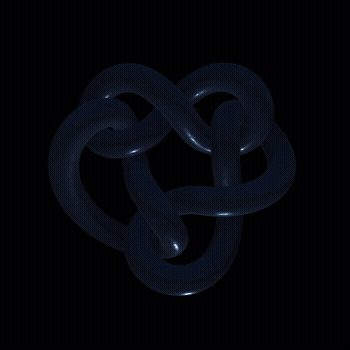
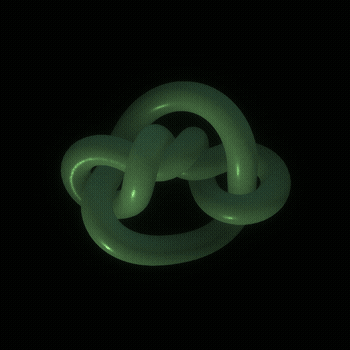
While making KNOTS I was thinking about the question of what it means to own an NFT, not just in a prosaic way, but in an energetic way. All design decisions, whether or not they’re arbitrary, do something to you. I felt it in terms of experiencing a volatile energy in my body, being so proximate to these very volatile markets and networks, or just information flows in general which can be intense. So, we started talking about what would make something like this feel positive and harmonious to have in your life. We made the decision to put each knot in a 3D environment with perfect feng shui. We included a spell from an ancient foundational text of Western esotericism in the smart contract as well. Projects like these allow big groups to work collaboratively and get paid fairly and instantly. After years of doing collaborative projects where the split of resources was really complicated, I’m excited by the new ways to handle it.
ALLADO-MCDOWELL Using feng shui and design with a somatic heuristic for these air triplicity objects is really interesting. It is a mode that I’ve been thinking about a lot, because these artifacts can be so disembodied. I was in the recording studio recently working on an album. Whenever we had to make a choice, we would sit and listen, and do what felt better to our bodies. The things we’re talking about are so disembodied that we’re having to respond with deeper levels of embodiment. That’s a dichotomy I haven’t really thought about before in terms of NFTs. What is an NFT doing to you? Can you bless or curse somebody with an airdrop?
SEGAL Is it like getting a sacred talisman or is it like getting the U2 album on your iPod nonconsensually?
ALLADO-MCDOWELL It has to do with the belief in the virtual, right? You have to believe that these things are real and have value in order to access what they can or cannot do for you. There is a mental, energetic, emotional, and ultimately physical quality to it.
SEGAL I felt like the spirit of each of the KNOTS started to communicate with me in some ways while we worked through the design. And as I got to know the different forms the knots are based on, it became clear that they have different personalities. Some end up being rather symmetrical and mellow, while some are strange and lopsided and have these obvious points of tension that could suggest a crisis, if you’re trying to turn it into a story.
When someone mints a knot, they’re shown a set of coordinates on a loop. They select whichever coordinates appeal to them, which generates a random seed that determines which knot they receive. The coordinates are part of a schematic. We came up with the different directional treatments in terms of color, texture, and vibe.
ALLADO MCDOWELL I was just thinking of the idea of binding and election: astrological elections, and divination, and the idea that time is moving while the pieces of the solar system are configuring. You shoot your shot at a specific moment and something comes back. It’s only possible for that thing to come back at that specific moment, in that way. The more complex the system is, the more specific the thing that comes back. So with a high temperature, and a high degree of randomness, AI generated text, or AI generated anything, is going to have some of the quality of the moment or environment in which it was constructed. You can construct it in a purely deterministic way and just see it as a statistical process. But if you create a structure around it, you can get things out of it that have meaning. That meaning is made out of the structure you’re wrapping around the statistical system.
Both Pharmako-AI and Amor Cringe were written with GPT-3. Pharmako-AI, which began with a diary entry, happened in a kind of blur over a two week period. It happened to be a really important astrological period for me. I was writing a book at the time and my astrologer asked me if I could finish it during that period. I said no, because it would take longer than that, but then Pharmako-AI happened.
Writing Amor Cringe was a very different process. It was prompted by a series of conversations I had with you about the nature of cringe and the fundamental underlying empathy and the modeling of self and others that it implies. I was also thinking about more esoteric interpretations of the cringe phenomena, like the Buddhist question of whether or not there is a self to model. Maybe cringe could be a vehicle toward that realization. I wanted to explore shadow material, or things that make me cringe. When I had the option of making a choice, I was going to make the cringiest choice, whatever that meant. The book had to be as cringe as possible.
Unlike in Pharmako-AI, in Amor Cringe I didn’t articulate which voice was mine, and which was from GPT-3. It was very fluid. I would go back and forth and change things. These systems are so generative that you need to construct a method. Optimizing for cringe is like defining the objective function of an AI or machine learning algorithm. In terms of creating the character, I didn’t sit down and think of exactly what they were going to be like, that was partly automated. I did have the idea that I really wanted them to live in the basement of a TikTok house, which seemed like a great cringey way to be right now. Specifically in the basement, to act as a sort of subconscious of the TikTok house. There were elements like that where I interjected what I was sure the character would do, but it was an emergent character. As with all writing, it was emergent. It wasn’t designed.
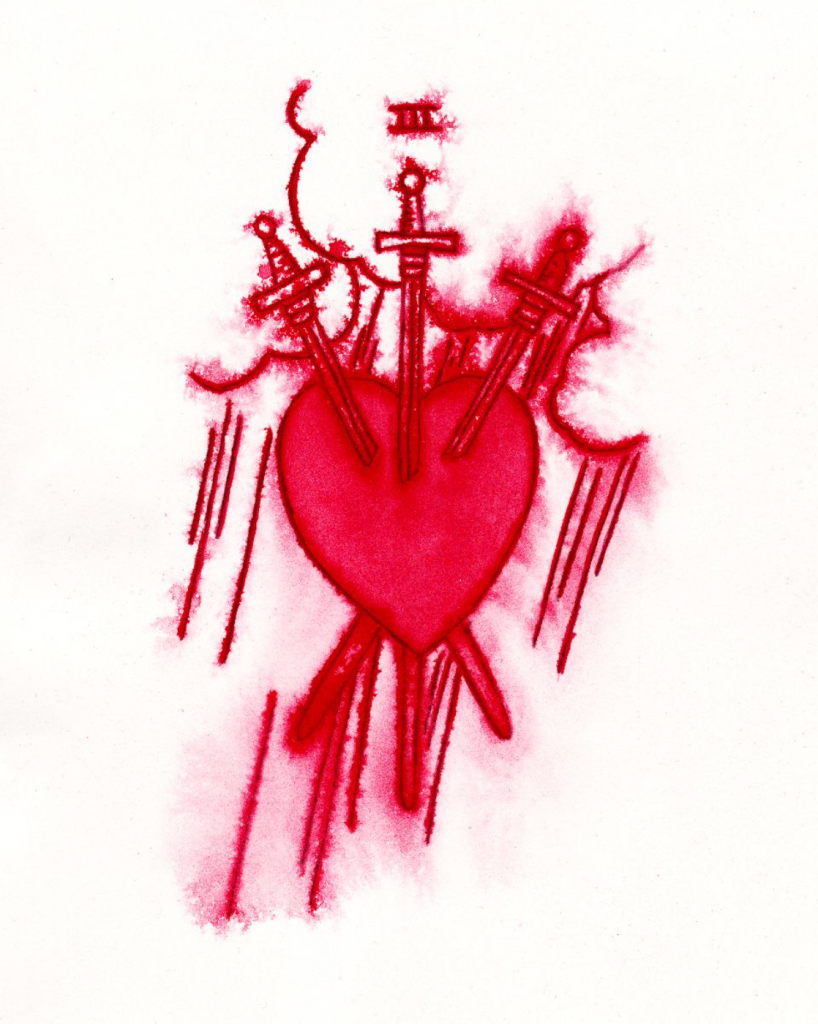
SEGAL What was so funny, too, is that it’s so related to the cliche of how fiction is described. Writers are always saying, “these characters took on a life of their own, and they started speaking to me or through me,” in divinatory, channeling nature. But the way you were accessing that condition was historically novel.
ALLADO-MCDOWELL It’s not to say that those things aren’t true either. I have experienced those aspects of writing, but in this case there was also a cringe element. It’s in a way a parody of the failure of autofiction. The presence of the AI hollows out of the romantic notion of telling your own story. You can cringe and say “oh God, this is desecrating all that is holy about writing and the imagination,” or you can accept that this is just another weird thing you can do that produces new emergent phenomena and new types of cringe.
SEGAL Music is far ahead of literary composition in terms of using different synthetic forms, and making sounds and samples. It’s just very funny with literature. It’s 2022 and people don’t understand autofiction. But “Seinfeld” was the most popular show in America twenty years ago. It’s like literature has a very strange relationship to the norms of other disciplines, developing new modes of writing at a slower and more conservative rate. Literature tends to ask questions really late.
With tools like Sudowrite, it’s now easy for the public to use these types of machine learning tools. At one point, I was creating experimental poetry of my own using some of these methods and then presenting them to a poetry workshop that I was in. I experimented with sometimes telling them it was written using AI, and sometimes not. When I said it was written with AI, they were horrified. Even though they didn’t know me, they really, really wanted it to be poetry that I wrote myself. The idea that it was my writing from my mind, from my experience, from my emotions had so much sentimental power to these strangers. I found that super interesting. There was definitely a squeamish factor. Maybe that’s how the idea of the “real” relates to cringe. I think that whether people like it or not, they’re going to have to learn how to develop new methods for reading that include the possibility of things being made in these more-than-human ways.
ALLADO-MCDOWELL I was just looking at a collection of crystals and they were all so incredible. They obviously were made by the earth: there’s a certain kind of authorship there, but they also are emergent. They can be more compelling than most of what you see in an art gallery. Of course, there are lots of things that people do with crystals that are not compelling, but the crystals themselves—especially choice specimens—can be appreciated without having to have somebody there on the other side that identifies as the author. I feel like the challenge that’s coming from this new way of writing and of making is that you may not get to know where it came from. You just have to appreciate it for what it is.
—Moderated by Lauren Studebaker
